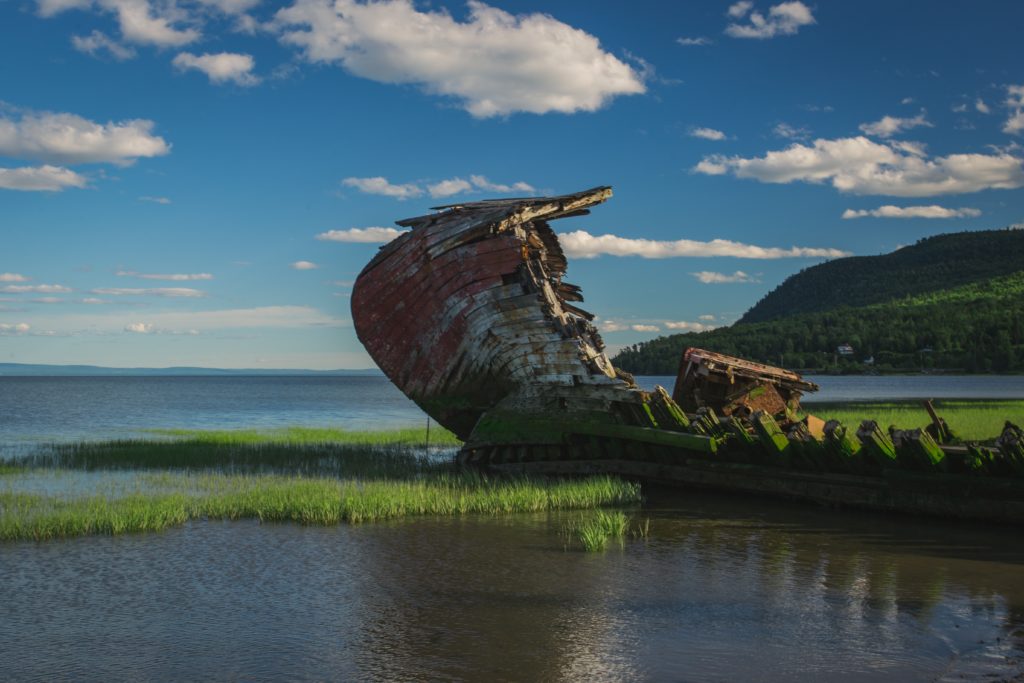Marginal and messy places: ‘The Inner Coast’
I met author Donovan Hohn briefly this year, during a group Zoom meeting about cities of asylum, a project he mentions in the acknowledgements of his essay collection “The Inner Coast.” Hohn teaches at Detroit’s Wayne State University, where he’s admirably involved in establishing a program offering refuge for endangered or exiled writers.
I can’t remember now why I looked up his bibliography after the meeting, but I’m glad I did—my mental dousing rod, which is now active all the time, found the water right away. In addition to the charmingly titled “Moby-Duck: Beachcombers, Oceanographers, Environmentalists, and Fools, Including the Author, Who Went in Search of Them,” Hohn has published a stellar collection of essays: “The Inner Coast.”
I’m obsessed with water, and I’m also from the Great Lakes region—America’s “third coast.” So I was instantly drawn to both the physical and spiritual promise of an inner coast. I wasn’t disappointed.
“All coasts are marginal and messy places, which is why people like me are drawn to them, I suspect,” Hohn writes in the introduction. “Where land and water mingle and meet, so do habitats, biomes, worlds.”

He points out early that Michigan, my birth place and compass center, is a paradox—tucked into the middle of a continent but also coastal.
Hohn follows water throughout the book, elaborating on this essential element’s paradoxical states of being:
- as hazard, transportation, and recreation (ice canoe races in Montreal, “Revival of the Ice Canoe”)
- as nourishment, cleanser, and poison (drinking water in Flint, Michigan; “The Zealot”)
- as habitat, muse, and sacred element (the history of water writing in “Watermarks”)
- as a connector in all kinds of directions, and in many different dimensions

In multiple essays, Hohn describes the Great Lakes as a horizontal highway system as long west to east, west Michigan to the Atlantic, as the Mississippi River is long north to south, Minnesota to the Gulf of Mexico. I loved this flipped geography, and this past of water vehicles superimposed on the familiar map of my childhood.
“The journey of a river from source to mouth resembles our own journey from birth to death, an analogy oft remarked,” Hohn writes in my favorite essay in the collection, “and yet the beginnings and endings of rivers are as fictional as those we impose on stories.”
This essay, “Watermarks,” is perhaps the most cerebral in the book. It takes on and circles around the enormous topic of water writing, from Melville to DiVinci to Solnit.
Explore this topic, Hohn writes, and “you’ll find that literary hydrography is slippery, shape-shifting, ever-changing, difficult to chart, turbulent one moment and the next stilled by a glass calm.” And yet (a phrase he calls out in the last essay in the book), Hohn tackles an essay about writers tackling the topic of water, clarifying why we humans—especially those of us with ready pencils—are attracted to water as a subject.
“All matter is in motion, physicists and Heraclitus tell us, but the motion of water, unlike that of atoms or stone, readily accommodates our powers of perception, the time scale of a human life. The motion of water is luminous and momentary.”
Through all the disparate essays in “The Inner Coast,” I came to recognize and appreciate a singular, guiding voice. That reliable, bemused, fact-laden guy riding along with a bearded collector to farm auctions in search of old tools, or attending public meetings in Flint, or huddled in the back of a van, trying to follow the vernacular French of the ice canoe team debating wax techniques before a race. All with a notebook in hand.
I pictured this narrator persona in every piece, and he was always carrying a notebook. He was a consistent, comforting presence on a long journey, in stages, through the marginal, messy places of unfamiliar coastline and familiar, inner life.
Reading “Moby-Duck” is definitely in my future.